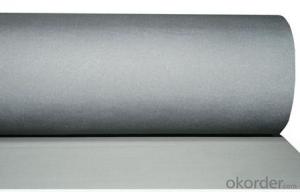When it comes to plumbing, one of the most common and effective tools is Teflon tape. It’s a simple yet ingenious solution to prevent leaks in threaded pipe connections. But did you know that using Teflon tape on PVC pipes is a bit different? Let’s dive into the world of plumbing and explore the nuances of using Teflon tape on PVC pipes, the thread seal for PVC.
The Wonder Material: Teflon Tape
Teflon tape, also known as plumber’s tape or PTFE tape, is a type of non-stick tape made from polytetrafluoroethylene (PTFE). It’s a wonder material that has a myriad of applications, from cooking to construction. In the realm of plumbing, it’s a go-to for creating airtight seals on threaded connections. It’s easy to use, affordable, and readily available at most hardware stores.
Why Use Teflon Tape on PVC?
You might wonder why you would use Teflon tape on PVC at all. PVC pipes are durable, lightweight, and corrosion-resistant, but they don’t form threads as easily as metal pipes. When you need to connect PVC pipes with threaded fittings, Teflon tape comes in handy. It helps in creating a leak-proof seal that ensures a long-lasting and secure connection.
The Right Way to Apply Teflon Tape on PVC
Applying Teflon tape on PVC pipes is not as straightforward as it is on metal pipes. Here’s a step-by-step guide to help you get it right:
1. Clean the Surface: Before you start, make sure the PVC pipe and the threaded fitting are clean and dry. Any residue can prevent the tape from adhering properly.
2. Choose the Right Tape: Not all Teflon tapes are created equal. Choose a tape that is specifically designed for PVC applications.
3. Wrap the Tape: Start at the end of the male thread and wrap the tape clockwise, overlapping each turn by about half the width of the tape. This ensures a uniform seal.
4. Tighten the Connection: Once the tape is in place, tighten the connection by hand first, and then use a wrench to tighten it further. Be careful not to overtighten, as this can damage the threads or the tape.
5. Check for Leaks: After the connection is made, it’s essential to check for leaks. You can do this by applying pressure to the system or using a soap solution to detect any bubbles that may indicate a leak.
Common Misconceptions About Teflon Tape on PVC
There are several myths surrounding the use of Teflon tape on PVC pipes. Let’s debunk a few:
– Myth 1: Teflon tape is only for metal pipes. Fact: Teflon tape can be used on PVC, but it’s essential to use the right type and follow the correct application method.
– Myth 2: More tape means a better seal. Fact: Using too much tape can actually weaken the seal. It’s better to use the minimum amount necessary for a proper seal.
– Myth 3: Teflon tape is a permanent solution. Fact: While Teflon tape provides a good seal, it’s not a permanent fix. Regular maintenance and inspection are necessary to ensure the integrity of the connection.
The Benefits of Using Teflon Tape on PVC
Using Teflon tape on PVC pipes offers several benefits:
– Leak Prevention: The primary benefit is preventing leaks, which can save you time, money, and the headache of dealing with water damage.
– Easy to Use: Teflon tape is user-friendly, making it accessible for both professional plumbers and DIY enthusiasts.
– Cost-Effective: It’s a cost-effective solution compared to other sealing methods, such as using specialized compounds or replacing parts.
– Versatility: Teflon tape can be used in various plumbing applications, not just for PVC pipes but also for other materials.
When to Avoid Using Teflon Tape on PVC
While Teflon tape is a versatile tool, there are instances where it’s better to avoid its use on PVC pipes:
– High-Pressure Applications: In situations where high pressure is expected, Teflon tape may not provide the necessary seal. In such cases, consider using alternative sealing methods.
– Chemical Exposure: If the PVC pipes are exposed to chemicals that could degrade the Teflon tape, it’s best to explore other options.
– Temperature Extremes: Teflon tape has a temperature range, and using it outside of this range can compromise its effectiveness.
Conclusion
Teflon tape is a valuable asset in any plumber’s toolkit, and its use on PVC pipes is no exception. By understanding the proper application techniques, benefits, and limitations, you can ensure that your PVC pipe connections are secure and leak-free. So, the next time you’re working with PVC pipes, don’t shy away from using Teflon tape – embrace it as the thread seal for PVC that it is.

